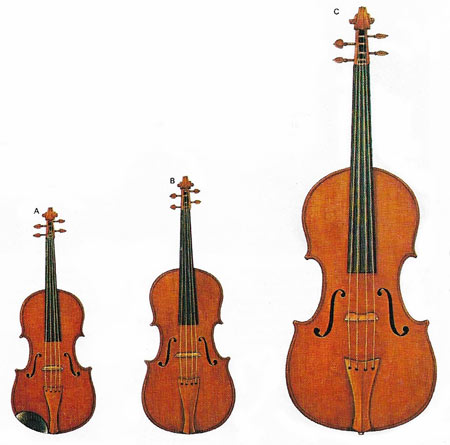string section

The string section of the modern orchestra is based on the violin family: violin, viola, and cello. The violin role divides into first and section parts, although the instruments played (A) are identical for either part. The larger viola (B) plays a part that corresponds to the alto voice in singing, and the violon-cello, or cell (C) as it is usually called, takes the tenor part. The fourth main member of the modern string section – the double bass – at first played the cello line an octave lower. The instrument was regularly a part of the orchestra by the mid-eighteenth century, but was not of a standard form until the Italian model with four strings won general recognition in the late nineteenth century.
The string section is the bowed string instruments in an orchestra, consisting of violins, violas, cellos, and bass viols.
One of the most instantly recognizable classical mediums is the string quartet, which originated in the 18th century and is made up of two violins, a viola, and a cello. Haydn's, Mozart's, and Beethoven's sets of string quartet are among the greatest achievements of classical chamber music and, inspired by this example, classical composers, notably Bela Bartók (1881–1945), have tended to save their most complex ideas for the medium, often demanding enormous skill from the performers.
The string quartet is very versatile and has a great range of colors at its disposal, including several types of pizzicato (plucking), col legno (hitting the strings with the wood of the bow), as well as many different bow strokes. String quartets are often used to provide background music at events such as wedding receptions, sometimes playing popular arrangements. They have also been used occasionally in pop music, for instance on the Beatles' songs, "Yesterday" and "Eleanor Rigby".


